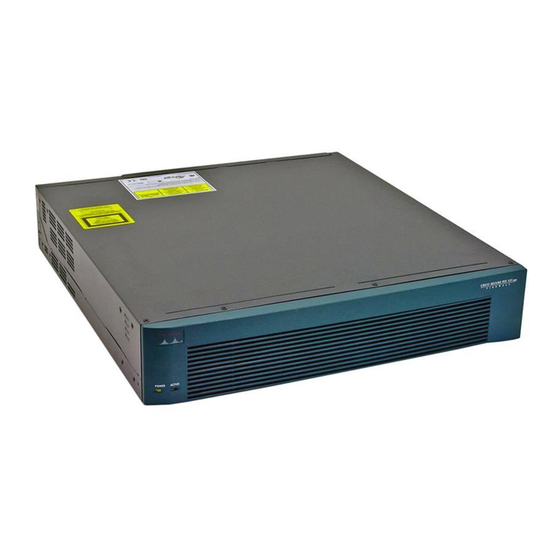Cisco PIX 525 Информационный лист - Страница 2
Просмотреть онлайн или скачать pdf Информационный лист для Сетевое оборудование Cisco PIX 525. Cisco PIX 525 13 страниц. Security appliance
Также для Cisco PIX 525: Руководство пользователя (30 страниц)

Data Sheet
inspection engines incorporate extensive application and protocol knowledge and employ security
enforcement technologies that include protocol anomaly detection, application and protocol state
tracking, Network Address Translation (NAT) services, and attack detection and mitigation
techniques such as application/protocol command filtering, content verification, and URL
deobfuscation. These inspection engines also give businesses control over instant messaging,
peer-to-peer file sharing, and tunneling applications, enabling businesses to enforce usage
policies and protect network bandwidth for legitimate business applications.
Multi-Vector Attack Protection
Cisco PIX Security Appliances incorporate multi-vector attack protection services to further defend
businesses from many popular forms of attacks, including denial-of-service (DoS) attacks,
fragmented attacks, replay attacks, and malformed packet attacks. Using a wealth of advanced
attack protection features, including TCP stream reassembly, traffic normalization, DNSGuard,
FloodGuard, FragGuard, MailGuard, IPVerify, and TCP intercept, Cisco PIX Security Appliances
identify and stop a wide range of attacks, and can provide real-time alerts to administrators.
Flexible Access Control and Powerful Flow-Based Policies
Administrators can also easily create custom security policies using the flexible access control
technologies provided by Cisco PIX Security Appliances, including network and service object
groups, user and group-based policies, and more than 100 predefined applications and protocols.
Using the powerful Modular Policy Framework introduced in Cisco PIX Security Appliance
Software v7.0, administrators can define granular flow-based and class map-based policies, which
apply a set of customizable security services, such as inspection engine policies, Quality of
Service (QoS) policies, connection timers, and more, to each administrator-specified traffic
flow/class. By combining these flexible access control and per-flow/class security services, the
powerful stateful inspection and application-aware firewall services, and the multi-vector attack
protection services that Cisco PIX Security Appliances deliver, businesses can enforce
comprehensive security policies to protect themselves from attack.
Market-Leading VoIP Security Services Protect Next-Generation Converged
Networks
Cisco PIX Security Appliances provide market-leading protection for a wide range of voice-over-IP
(VoIP) other multimedia standards. This allows businesses to securely take advantage of the many
benefits that converged data, voice, and video networks provide, including improved productivity,
lower operational costs, and increased competitive advantage. By combining VPN and Quality of
Service (QoS) with the advanced protocol inspection services that Cisco PIX Security Appliances
provide for these converged networking standards, businesses can securely extend voice and
multimedia services and the benefits they deliver to remote offices, home offices, and mobile
users.
Robust IPSec VPN Services Cost Effectively Connect Networks and Mobile Users
Using the new full-featured VPN capabilities of the Cisco PIX 525 Security Appliance, businesses
can securely connect networks and mobile users worldwide across low-cost Internet connections.
Solutions supported range from standards-based site-to-site VPN using the Internet Key Exchange
(IKE) and IP Security (IPSec) VPN standards, to the innovative Cisco Easy VPN remote access
capabilities found in Cisco PIX Security Appliances and other Cisco Systems security solutions,
®
such as Cisco IOS
routers and Cisco VPN 3000 Series Concentrators. Cisco Easy VPN delivers
a uniquely scalable, cost-effective, and easy-to-manage remote-access VPN architecture that
All contents are Copyright © 1992–2007 Cisco Systems, Inc. All rights reserved. This document is Cisco Public Information.
Page 2 of 13
